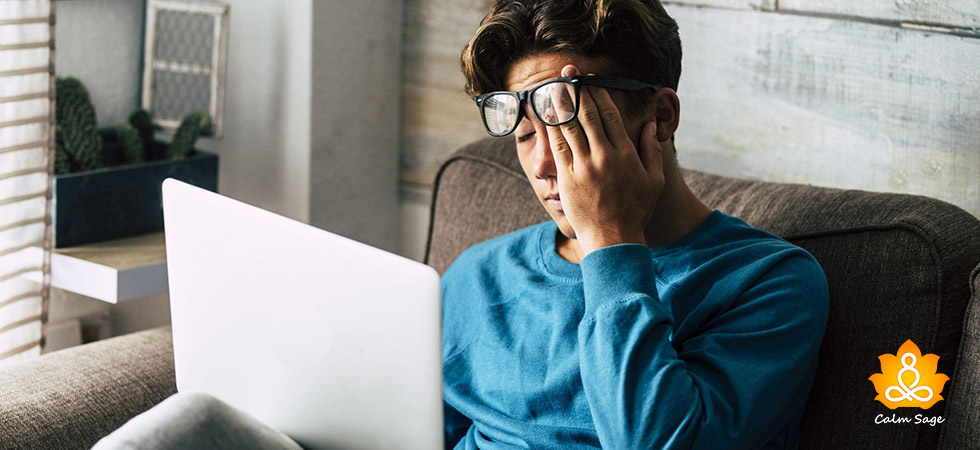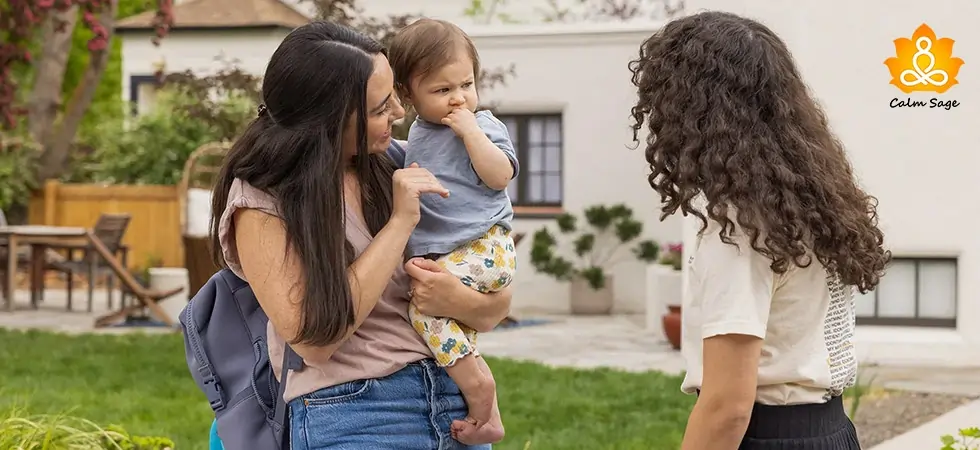Does My Child Have Anxiety? | Anxiety Disorders In Children, Symptoms & How To Help
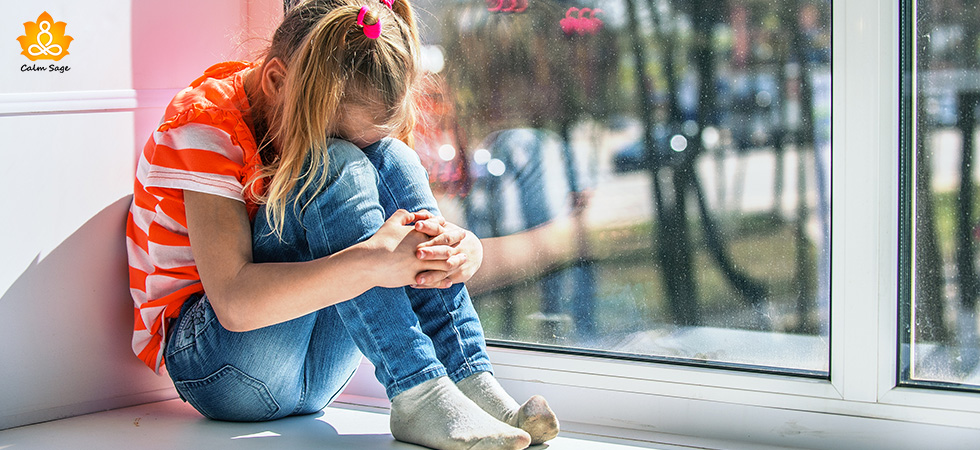
List of Contents
Navigating through childhood is in itself a challenging process but in recent times, ever since the global pandemic hit, anxiety disorders or anxiety-related concerns have risen in adults and children both.
Kids thrive on learning new skills, facing new and exciting opportunities, and navigate in a world that might not always make sense to them. Since 2020, children have been forced and were exposed to a reality that they weren’t ready for. Fear of the unknown is too much to handle as an adult but it is more difficult from a child’s point of view.
Also Read: Best Anger Management Tips for Kids, Teens and Adults
Anxiety Symptoms in Children may not always show similar signs and symptoms as adults. They may, however, show signs of anger, irritability, fear, and worry. In Children, Anxiety disorders are one of the most common mental health concerns.
But Still, My Question is “Does My Child has Anxiety?”
Don’t Worry This Article has all for you. In this article, we’ll explore the common types of anxiety disorders in children, the signs of anxiety in your child may have, and how to help your anxious child.
So let’s get started!
Common Types Of Childhood Anxiety Disorders:
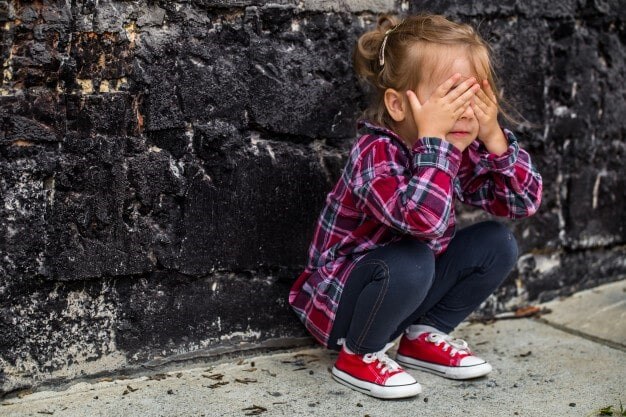
Similar to adults, children can too develop anxiety disorders. Some signs of an anxiety disorder are easy to spot but some may be harder to identify. Some common anxiety disorders in children can be:
1. Separation Anxiety Disorder
Separation anxiety disorder generally develops when a child is 3-4 years old. Separation anxiety in children generally occurs when a child fears being separated from their parent or caregivers.
Symptoms of this anxiety are easy to spot and can be:
- Refusing to let a parent or caregiver go
- Refusing to go anywhere without a parent or caregiver
- Refusing to sleep alone
- Refusing to go to school
2. Generalized Anxiety Disorder (GAD)
Generalized anxiety disorder (GAD) is a disorder that can be triggered by more than one thing such as worrying about their school performance, friendships, family conflicts, or other concerns.
Children with GAD Disorder usually develop symptoms such as:
- Headaches
- Abdominal pain
- Muscles ache and pain
- Trouble sleeping
- Trouble concentrating
- Irritability and fatigue
3. Selective Mutism
One of the most commonly overlooked anxiety disorders in children is selective mutism. Many people confuse this disorder as a child being too shy. Children with selective mutism refuse to talk to others and may talk to close friends or family members at home. In a situation where they are expected to talk, they may become uncomfortable and anxious.
Children with selective mutism refuse to be in social situations, may withdraw from a social setting, and usually avoid eye contact. Children around the age of 5 are more likely to be diagnosed with selective mutism.
4. Specific Phobias
Children may develop specific phobias that can make them feel anxious and worried only after they experience a specific trigger.
For example, a child may become anxious after being left alone for some time or when they see a spider.
Children with specific phobia anxiety may cry, freeze up, or cling to their parents or caretakers when faced with their fear. Mostly, many children may overcome this anxiety with age.
5. Panic Attacks
While this Panic attack is not so common in children, but it becomes more prominent in later years (tweens or teens).
Symptoms of Panic Attacks may be:
- Derealization/Depersonalization
- Chest pains
- Experiencing chills or hot flashes
- Dizziness
- Feeling shortness of breath
- Nausea or cramps
- Numbness or tingling in their body
- Faster heart rate
- Sweating or shaking
Check How Panic Attack and Anxiety Attack are Different?
6. Social Anxiety Disorder
Children with social anxiety disorder have an intense fear of having to engage in a social situation.
The signs of a child having SAD can include:
- Throwing temper tantrums
- Crying
- Clinging to parents
- Freezing up in a social situation
- Refusing to speak
- Avoiding social interactions as much as possible
7. Obsessive-Compulsive Disorder (OCD)
Another common anxiety disorder, children with obsessive-compulsive disorder (OCD), may have recurring impulses (obsessions) or repetitive behaviors (compulsion).
For example, they may wash their hands frequently or repeat certain words or phrases to themselves over and over.
How To Know If Your Child Has Anxiety?
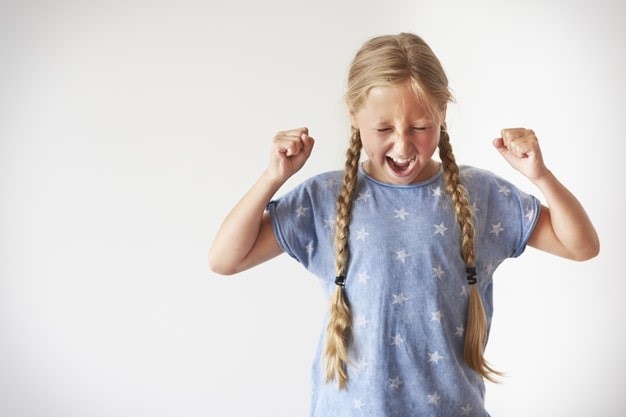
All kids, regardless of their age, experience anxiety in one way or another. For instance, a toddler can be afraid of the dark and that fear may stay with them as they grow older and might start to interfere with their daily functioning.
They may start avoiding places with dark corners or be afraid to sleep without lights, etc.
If you’re worried about your child having anxiety, these are the signs and symptoms to check in your child.
- They face trouble concentrating on a task
- They face difficulty sleeping (frequent nightmares, bedwetting, etc)
- They are not eating properly
- They get irritated quickly and are prone to temper tantrums
- They are always fidgety
- They frequently cry
- They are being too clingy
- They are complaining of stomach aches or headaches
- They are having trouble at school or are refusing to go to school
The intensity and frequency of these anxiety symptoms in children may vary according to the nature of the anxiety disorder. Some symptoms may be triggered by a specific phobia or setting while others may depend on a situation.
Normal fears and anxiety can abate as a child grows but if not, it is recommended that you seek help from a mental health professional.
What to Do if Your Child has Anxiety Disorder?
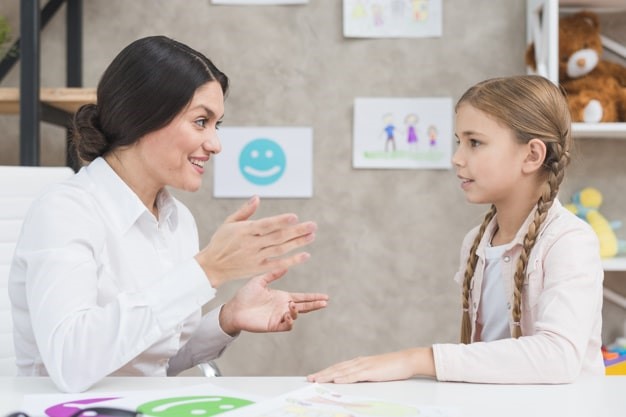
Anxiety is a condition that can be treated. If the symptoms of anxiety in your child are interfering with their daily life and disrupting their normal routine, it is recommended that you talk to a child psychologist. Many schools now have a guidance counselor who can offer advice, support, or referrals for further treatment.
Some therapists may refer to cognitive behavioral therapy to understand the source of anxiety in children and teach them healthy coping techniques.
For some extreme anxiety cases, a child psychiatrist may prescribe medication (this normally depends on the nature and intensity of the anxiety).
Book Your First Session With Therapist
As Parents or Caregivers, you can help your child cope with anxiety by:
A. Not avoiding what your child fears or worry about. Not talking about it with your child can worsen their symptoms over time.
B. Offering comfort and positive responses. Actively listen to your child’s fear and concerns but don’t support their fears. Instead, teach them relaxation techniques to help them cope with their anxiety.
C. Teaching your child that their anxiety is real and can be calmly and effectively managed. Avoiding or pretending that their anxiety doesn’t exist can be harmful to your child and their future.
Also Read: Talking To Children About Mental Health
Where To Get Help if Your Child has Anxiety?
You can always ask for help from your child’s school counselor or a general practitioner who specializes in child psychology. You can also contact either of the following helpline numbers:
- NAMI: 1-800-950-6264
- AASRA: 24/7 helpline number: 022 27546669
- Sneha India: 24/7 helpline number: 044 24640050
- One Life: 24/7 helpline number: 7893078930
- Vandrevala Foundation helpline number – 1860 2662 345
Do not ignore the signs of anxiety in a child. If left undiagnosed and untreated, anxiety can turn into serious mental health disorders in the future.
If you require additional support and assistance, you can reach out to us at info@calmsage.com or you can contact one of these online resources to seek professional help.
Next Read:
4 As of Stress Management To Cope With Stress
20+ Art Therapy Activities For Instant Stress Relief






